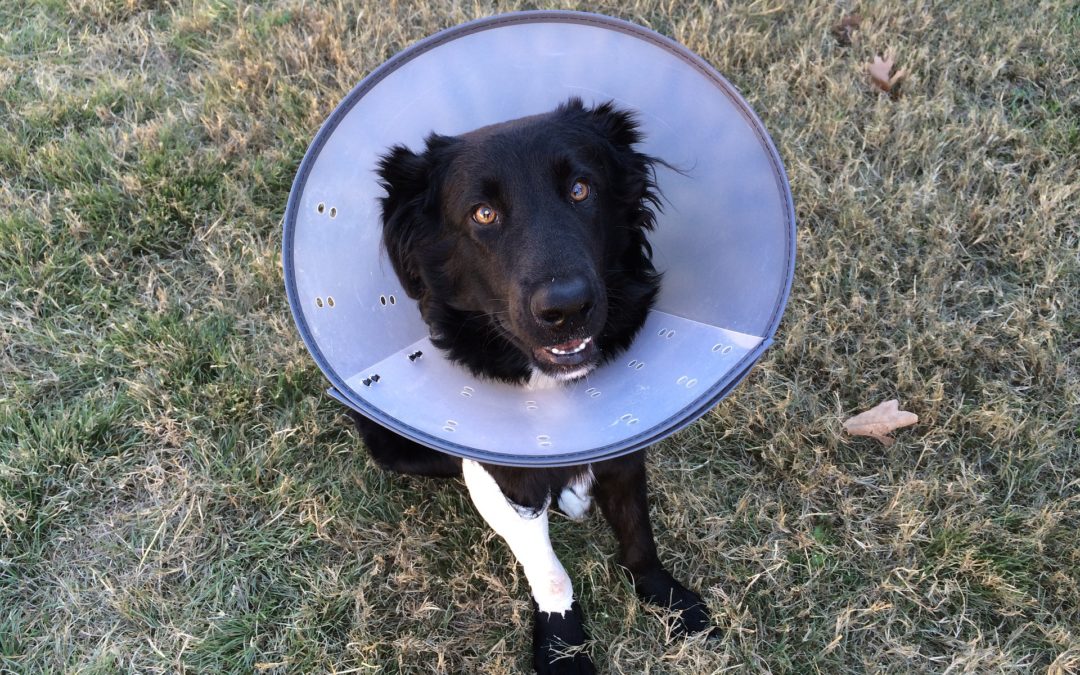How can I help my dog feel more comfortable wearing a cone? No dog enjoys wearing the cone of shame. Unfortunately, the cone is often necessary after surgery because it prevents the dog from biting at their stitches and opening or irritating their wound.
The most common type of cone dogs wear after surgery or major treatments is the ‘e-collar’ or the Elizabethan collar, also known as an e-collar. The Elizabethan collar was named for its resemblance to the Renaissance era style in women’s dress fashion, which was started by Queen Elizabeth I of England. There are also soft cones and donut collars that may be more comfortable for your pet.
Because it’s very rare for a dog not to need a cone post-surgery, it’s important to know how to get your dog used to wearing one. With these tips for properly using a cone, you can make the experience a little less stressful for your pup. Here’s how to make a dog cone more comfortable.
1. Keep the Cone On
The first step in how to make a dog cone more comfortable is to keep it on. It might be tempting to take the cone off every time you see your dog struggle. But it is best to be consistent and strict with the cone in order to help them adjust to wearing it and to protect them post-surgery. You only remove the cone when absolutely necessary.
Most dogs get used to wearing cones, and eventually learn how to maneuver and get around just fine with their cone. A little extra encouragement by way of attention can help your dog feel a little less depressed and worried about the contraption around their head.
2. Eating, Drinking, and Sleeping
One of the biggest difficulties dogs and their owners face in getting a dog used to a cone is making eating, drinking, and sleeping as easy as possible. The cone can certainly make these tasks more difficult, but it is entirely possible for dogs to sleep and eat with a cone on.
If your dog is having difficulty with a deep bowl, you can help them out by using a shallow bowl instead and by steadying it while he eats or drinks. Make sure that their water is in a very accessible space, away from cabinets or walls that might prevent your dog from being able to drink freely when they want while wearing a cone.
And if your dog typically sleeps in a kennel, guiding them in and out may help prevent them from getting stuck in a tough position.
3. Make Extra Space
When your dog is wearing a cone, getting around can be tricky, even when navigating familiar places like your home. In addition to the cone impairing their vision, your dog probably isn’t aware of how much extra space the cone takes up.
One way to help your dog adjust is to remove any unnecessary obstacles in your home. By doing simple things like pushing chairs in, or putting away large items like the vacuum, your home becomes an easier space for your dog to move around in. Rather than let your dog wander into a wall or doorframe, you can gently guide them toward the center of openings and through hallways, this way they can start to learn to navigate on their own.
4. Try An Alternative
The traditional cone you get from the vet may not always be the best fit for your dog. Fortunately, there are many more comfortable options now! Some dogs manage well with a traditional cone and will tolerate the extra nuisance for a few days. Other dogs may become depressed or detest wearing the cone, and take every opportunity to get rid of it.
Luckily, there are several alternatives to the typical e-collar, such as a soft cone, donut collar, or an inflatable e-collar. Regardless of what you use, make sure it properly fits your dog and prevents them from scratching or licking themselves.
Have Patience
No matter what type of cone you use, or how you help your dog navigate, eat, and sleep, they may still hate the cone. This is normal, and it’s best to be patient. Usually, your dog won’t have to wear the cone long term if they are healing properly.
However, if the cone is becoming an area of concern, check with the post-op vet for more advice. If you’re looking for a compassionate vet in the Gilbert, AZ area, give us a call at East Valley Animal Hospital. We pride ourselves on having respectful, caring interactions with our clients and their pets. And we’ll do everything we can to make your pet’s visit as comfortable as possible. To schedule an appointment, call 480-568-2462 today or contact us online.
Images used under creative commons license – commercial use. Image by Allison Peterson from Pixabay (3/10/2020)

